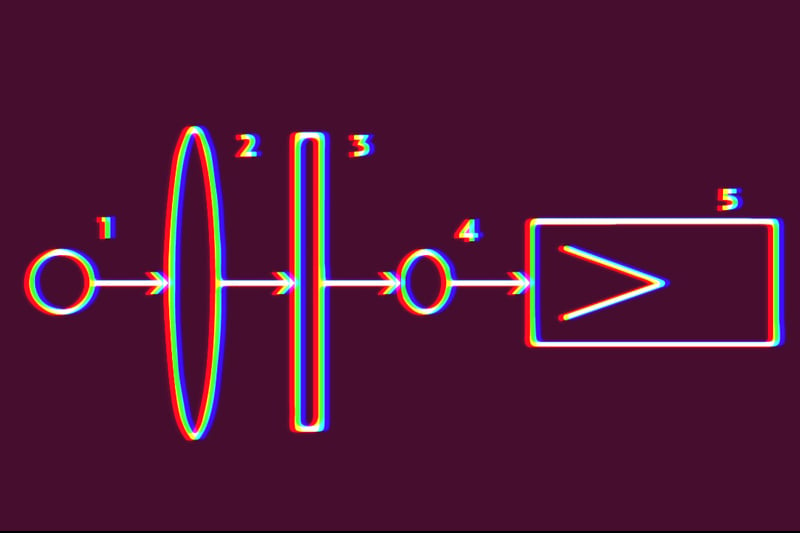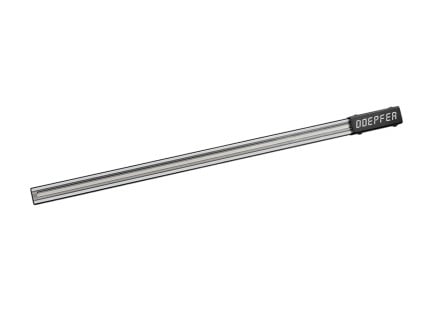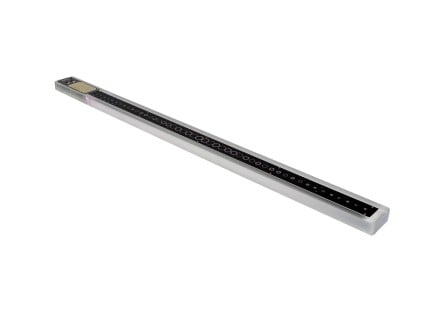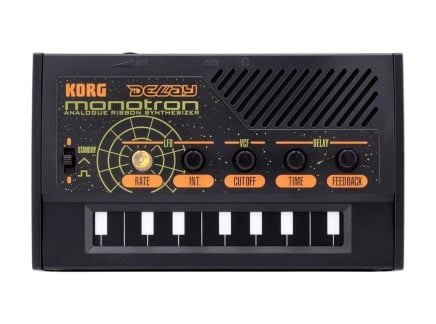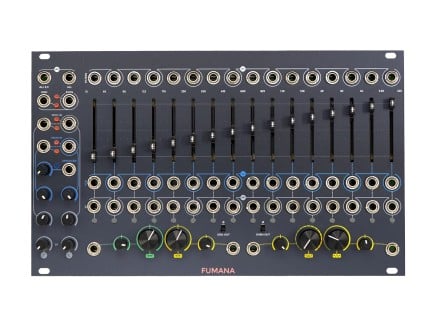With so many synthesizers, drum machines, obscure electronic instruments, and an ostensibly bottomless pit of music software available these days—many of which facilitate a seemingly endless range of imaginable and unimaginable sounds—it is easy to take abundance for granted. Like everything, experimentation with electronic sounds started sometime somewhere, and although most of us are familiar with iconic electronic instrument designers like Buchla, Moog, Serge, and perhaps Theremin, there was a huge range of arcane proto-synthesizers that almost never get mentioned. Many of them are only saved in the form of ideas, concepts, and diagrams, but their impact is still evident in today’s world.
Some of the most interesting early practices emerged from a place that itself can be seen as a social, cultural, and political experiment—the Soviet Union. Today we are revisiting a few lesser-known Soviet electronic music inventions and their creators from the beginning of the 20th century.
Neo Violena (1927)
Neo Violena was an early electronic music instrument resembling a violin, and similar to its French relative of the era, the Ondes Martenot, which it predates by a year. It was created by the joint effort of engineers Vladimir Gurov, V. Volynkin, and composer Lucien Varvich. The operational principle of the instrument relied on a performer pressing a metal string atop a conductive fingerboard, which resulted in the production of sound. Pitch was determined by the position of the finger on the fingerboard, and volume was controlled by the pressure applied. The sound itself was generated via a heterodyning vacuum tube oscillator, not unlike the Theremin or Ondes Martenot, and was reported to possess rich and diverse timbral qualities resembling many different instruments such as a flute, a violin, and a guitar.
Although the Neo Violena didn’t survive into the 21st century, its concept served as the bedrock for the future designs of the ribbon controllers and other touch-sensitive fingerboard interfaces: starting with the Trautonium (1929) to classic Moog Modular and Yamaha CS-80, to the obscure Dewanatron Swarmatron, as well as the modern-day Haken Continuum, Roli's Seaboard , Doepfer's A-198 Eurorack module, and more.
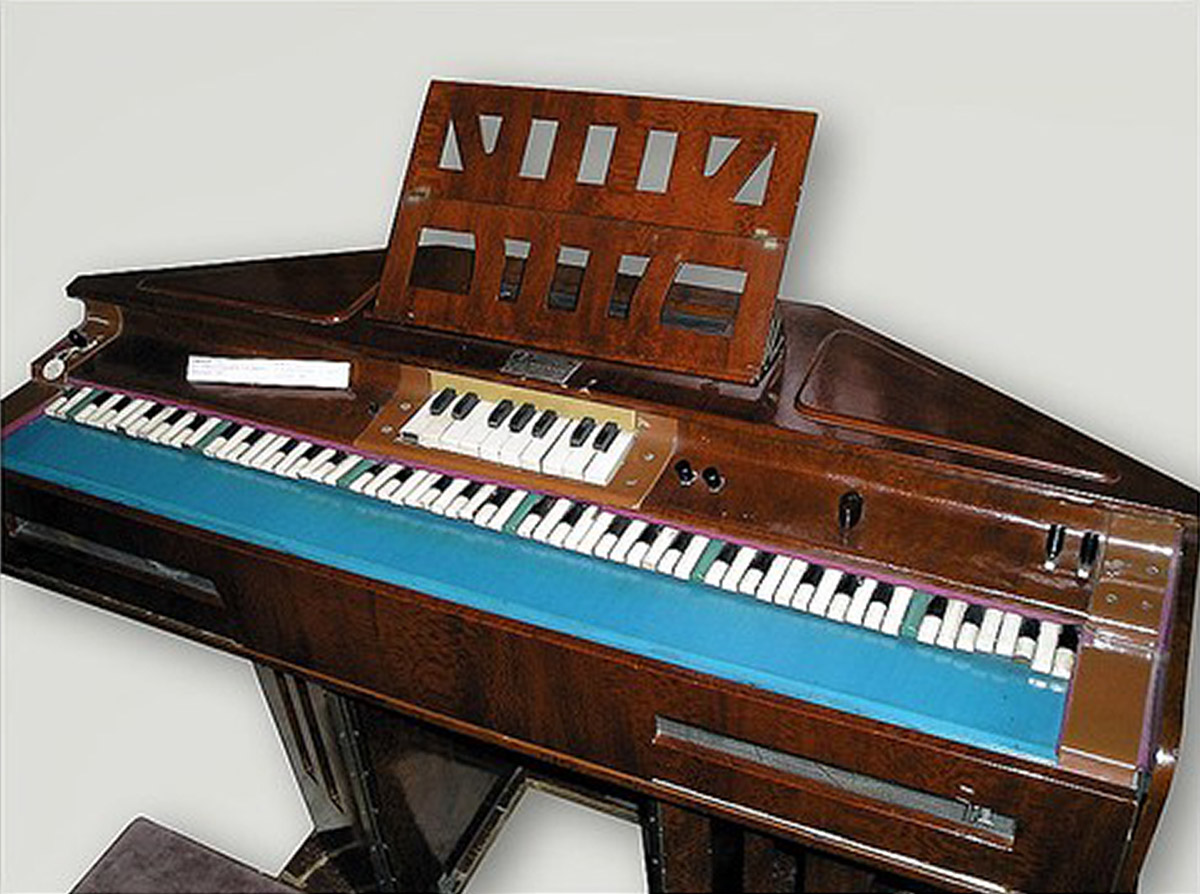
Emiritone (1932)
Emiritone was a similar melodic instrument that also utilized Theremin-inspired technological principles. It was created by A. V. Rimsky-Korsakov and A. A. Ivanov. The name of the instrument is an amalgam of Electronic Music Instrument, the last name initials of its creators, and the word ‘tone’.
The basis of the Emiritone’s sound was neon-tube oscillators producing a sawtooth wave. Altering the electrical current would change the timbral structure of the instrument’s tone, allowing for a total of 540 sonic variations. It could successfully replicate timbres of instruments like the bassoon, clarinet, violin, and many others. Emiritone was initially designed using the same combination of the conductive fingerboard as Neo Violena. Later, the input source was switched to a combination of keyboard and fingerboard interfaces with a non-equal-tempered ultra-chromatic scale. The instrument became fairly popular and for a decade or so was often used in concerts.
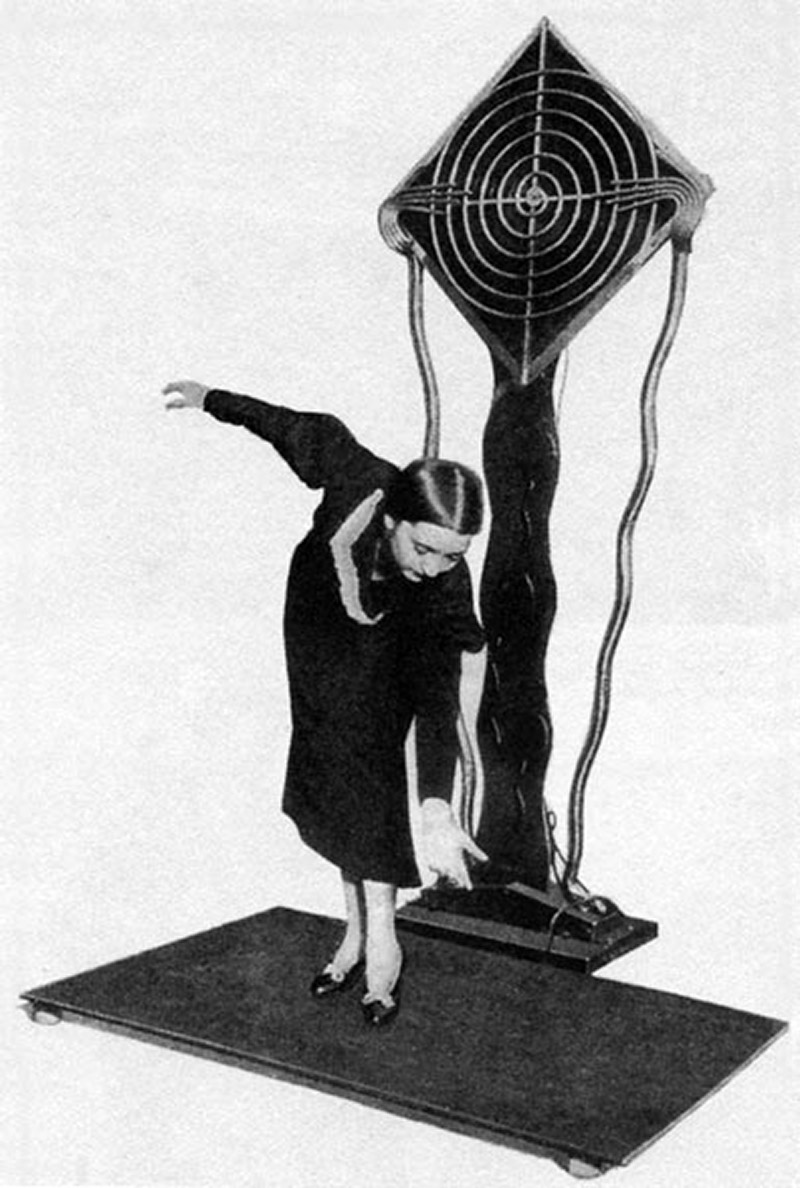
Terpsitone (1932)
Many of us are familiar with Leon Theremin’s futuristic invention—Thereminvox (or simply Theremin). Its heterodyning oscillator technology was at the frontier of scientific research at the time and influenced electronic music instruments for generations to come. Additionally, the instrument was popularized in the West by Moog Music, who made it commercially available, and the subsequent engravement of the Theremin’s sound into popular culture through science fiction films like The Day the Earth Stood Still. But the Thereminvox was not the only instrument created by Leon Theremin: one of his other inventions was the Terpsitone (named after the Greek muse of dance, Terpsichorè).
The method for generating sounds on the device relied on the same heterodyning principle as in the Thereminvox, although the interaction/performance aspect of it was what set it apart. Leon built the Terpsitone for his wife, who was a dancer. The slick antennas of the Thereminvox were replaced by a large sheet of metal hidden under the platform. Instead of using only hand gestures to control the pitch and amplitude of the sound, to play Terpsitone the performer was required to move their entire body.
Terpsitone was used several times throughout the 1930s for various dance, light, and music shows—and of course, the cross-disciplinary idea of using the human body as a tool for generating music is still a relevant subject in the field of interactive music.
Rhythmicon / Polyrhythmophone (1930)
Rhythmicon was a collaborative effort between the American avant-garde composer Henry Cowell and Leon Theremin. It can be safely considered to be the first ever rhythm machine. Born out of Cowell’s aspirations to create complex cross-rhythms and tonal sequences based on harmonic ratios, the instrument was brought to life by Leon Theremin.
At the center of the Rhythmicon was a 17-key polyphonic keyboard which controlled the rotation of metal disks with punctured holes in them. The rhythms were generated as the swiveling disks interrupted light beams that triggered photocells. As long as the key was held, the tone would repeat in a rhythmic loop: hence, holding several keys at the same time would result in complex polyrhythmic sequences.
Cowell composed several works for Rhythmicon, most notably Rythmicana and Music for Violin and Rhythmicon before he completely lost interest in the instrument and it was shoved away...but the story doesn’t end here. The Rhythmicon was rediscovered in the 1950s by the record producer Joe Meek, who reportedly ended up using it on several records. The machine’s unique sound also penetrated the world of Hollywood, and can be heard on several soundtracks of the era, including Kubrick’s epochal Dr. Strangelove. Check out this compilation record of works composed for a Virtual Rhythmicon:
Variophone (1931)
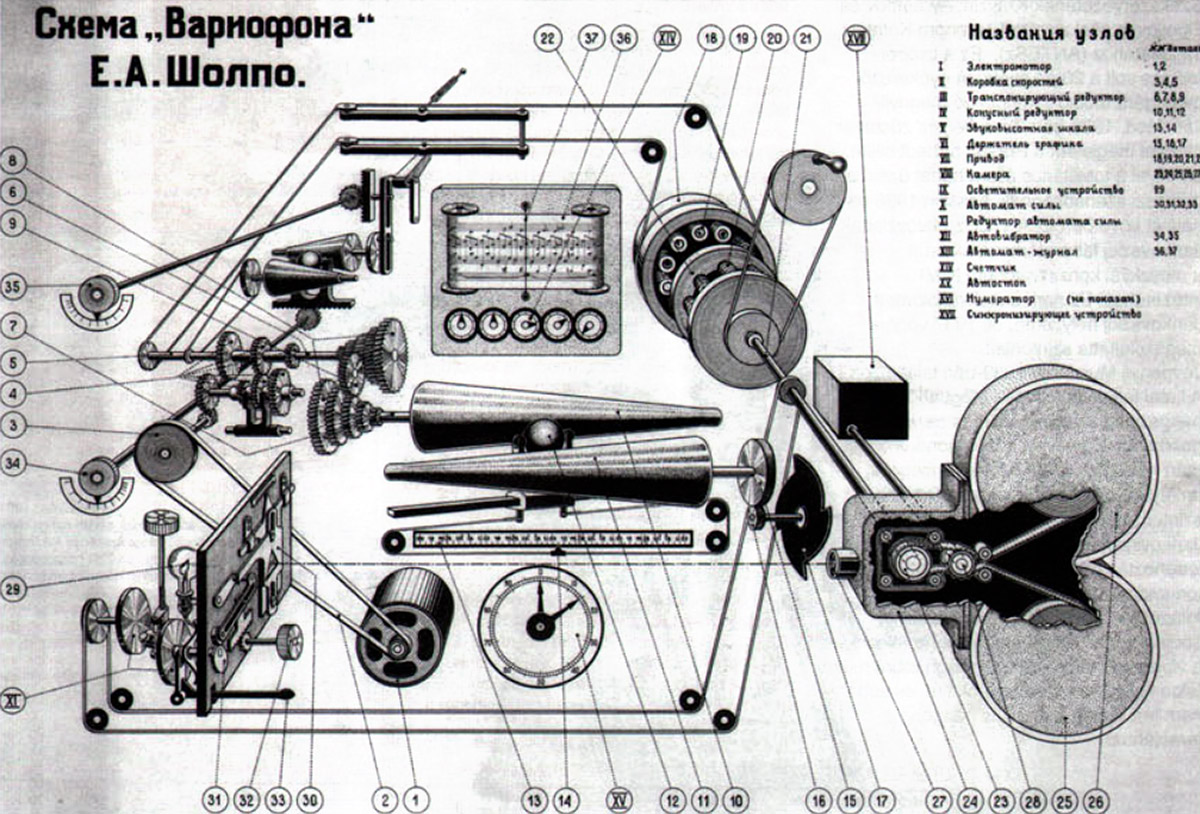
One of the biggest interests related to electronic sound production throughout a good part of the existence of the Soviet Union was a photo-optical method of sound synthesis. Several instruments were invented using this technology, each employing a relatively unique approach to converting visual imagery into sound waves. It is believed that this was influenced by the ideas of the composer Alexander Nikolayevich Scriabin, who was developing a theory for unifying sound and light (in fact, the quintessential ANS synthesizer created in the 1950s by Evgeny Murzin was named after him).
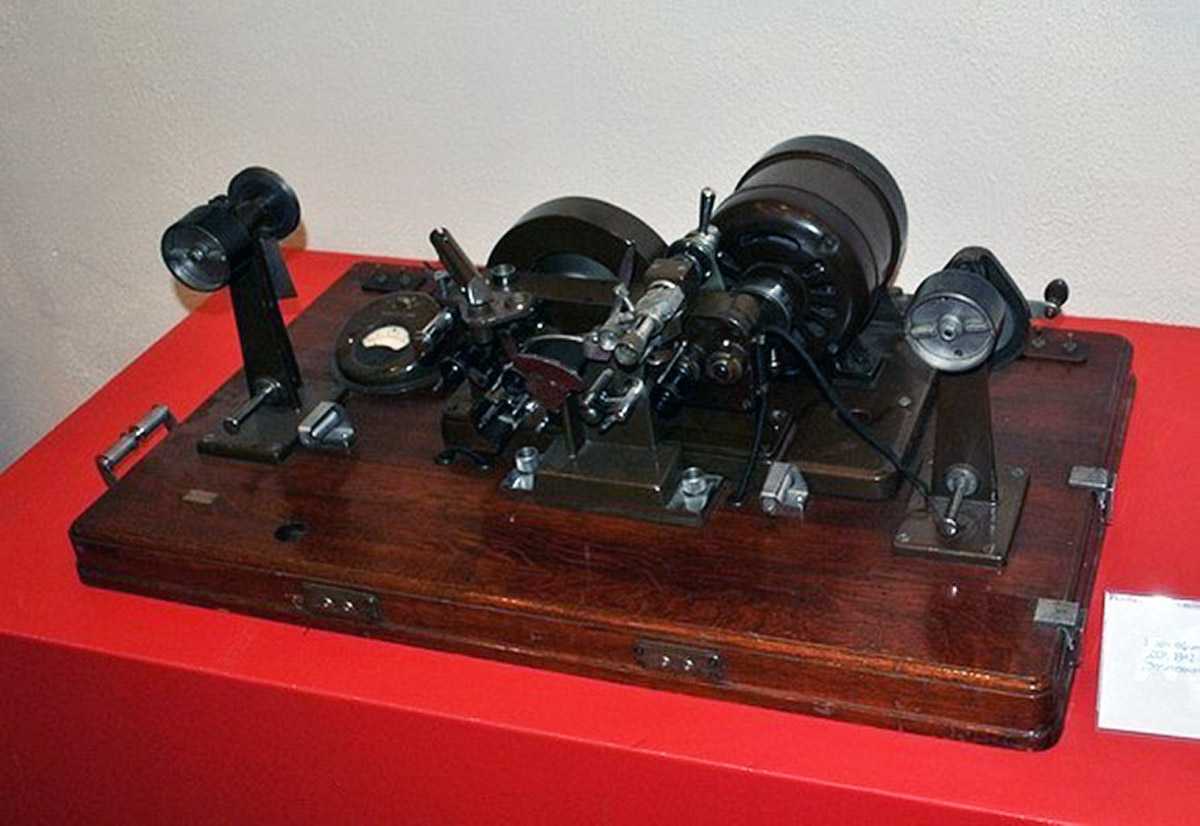
Variophone (not to be confused with the German electronic wind instrument Variophon) was one of the earliest successful incarnations of that technology. Developed in collaboration between Evgeny Sholpo and Gyorgy Rimski-Korsakow, Variophone allowed for the composition of polyphonic music of up to twelve voices. The actual technique relied on cutting out waveform shapes on a cardboard disc which rotated in synchronization with a 35mm film. The resulting sequence was further captured by a camera, played back via a projector, and amplified through a speaker.
Above all, free alteration to the pitch via the rotation speed, variations of shades of tone, glissando, and vibrato techniques were easily accomplished by the instrument. Throughout the 1930s, Variophone was used extensively in the scores of movies produced by LenFilm, such as popular sound-films of the time Torreodor and Symphony of Peace. Unfortunately, the original instrument was destroyed in WWII during the Siege Of The Leningrad, and the future iterations of the Variophone were never finished due to Sholpos death.
Nivotone (1931)
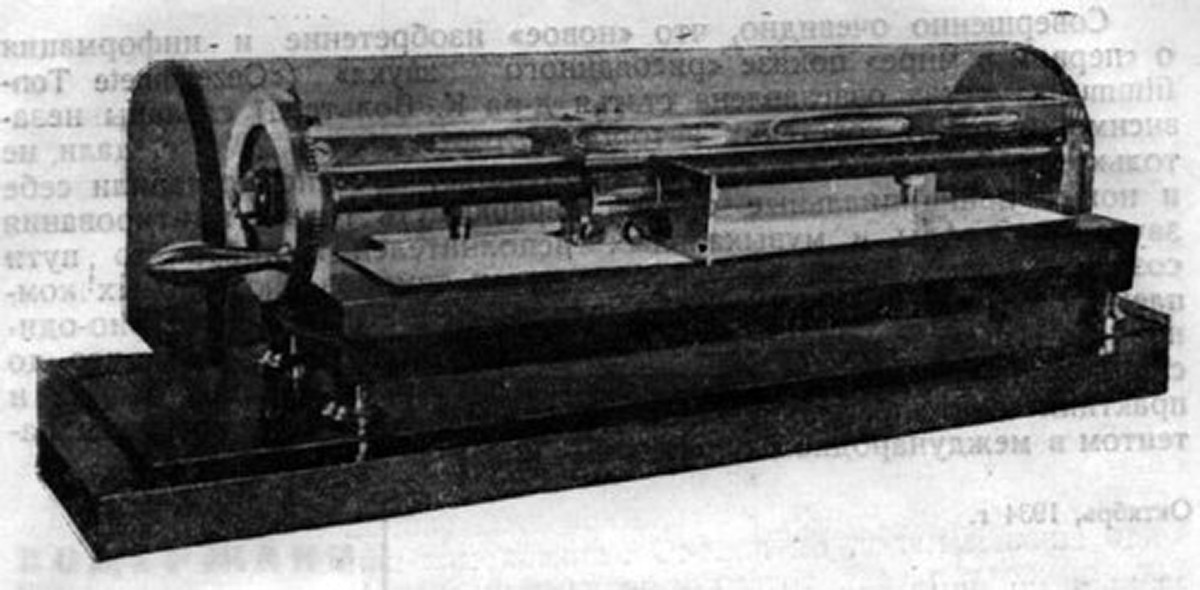
Parallel to Sholpo’s developments on Lenfilm, Arseny Avraamov, who was already at the forefront of Russian experimental music a decade earlier with his Symphony Of Sirens (1922), created his own multidisciplinary group at Mosfilm called “Multzvuk”. The group consisted of the lead composer and theoretician Avraamov, cameraman Nikolai Zhelynsky, animator Nikolai Voinov, and painter Boris Yankovsky, who also possessed a great interest in sound and acoustics. Multzvuk later moved to the Scientific Research Institute for Photography for Film and renamed itself ”Syntonfilm Laboratory”.
The main focus of their research was the exploration of graphical sound, and Voinov developed his own version of the optical synthesizer concept called Nivotone. To operate, Nivotone relied on photo-electric scanning of waveform paper cutouts. The technique was informally labeled as “Paper Sound".
Although Multzvuk/Syntonfilm Laboratory only existed for half a decade, they produced more than 2000 meters of optical synthesis soundtracks and a lot of experimental animation films. Check out Nivotone in action:
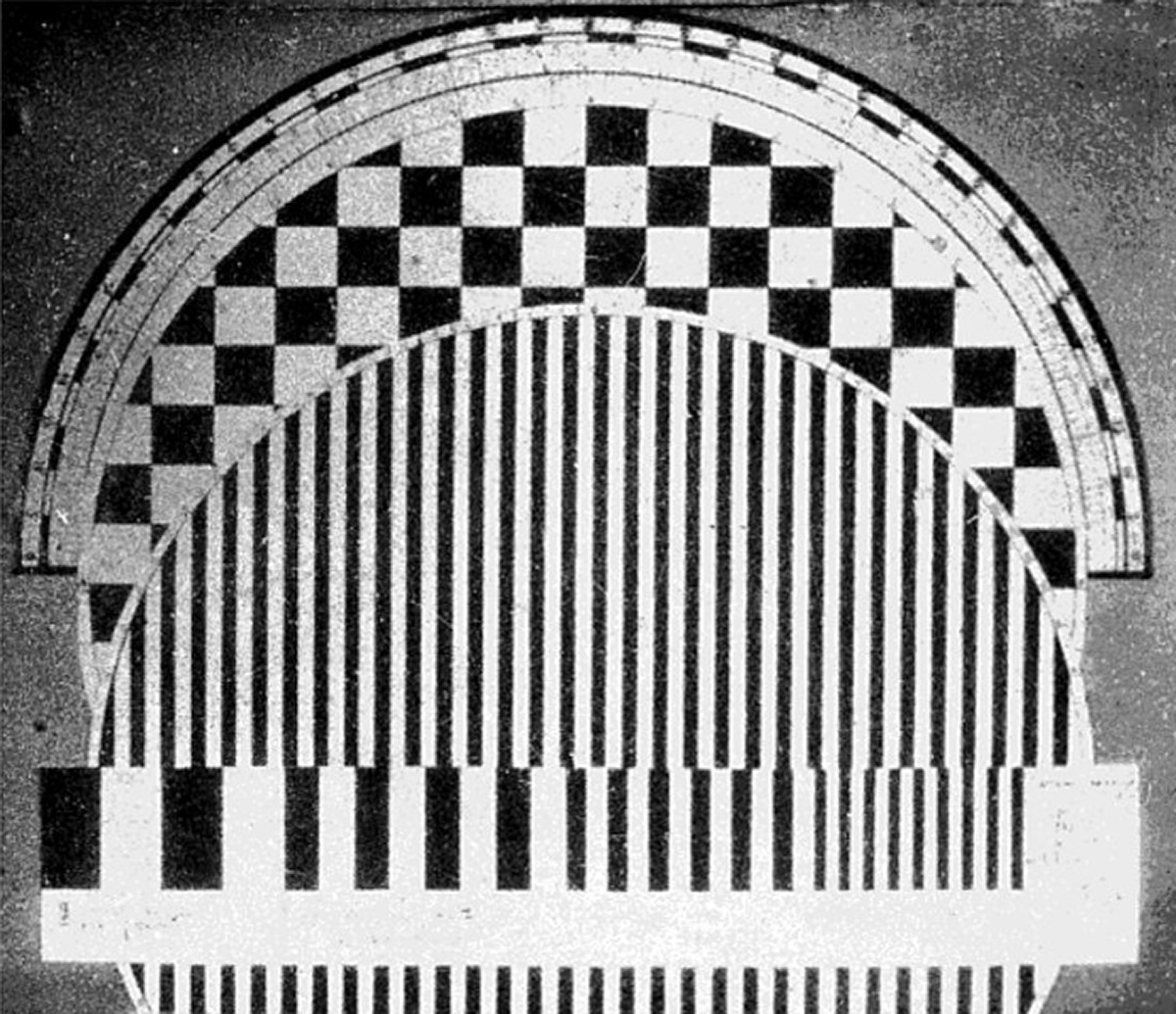 Yankovsky's scale with angles for pitchshifting
Yankovsky's scale with angles for pitchshifting
Vibroexponator (1932)
Boris Yankovsky started working at Multzvuk as Avraamov’s apprentice, yet the scope of his interests grew and he quickly developed his own ideas on optical synthesis. He left Multzvuk in 1932 and started developing his own approaches to optical sound, decomposition, and re-synthesis.
While working on ‘drawn sound’ Yankovsky realized that pure uniform waveforms do not sufficiently represent timbre in music, and that there was a need for a more advanced method to achieve tonal complexity. By recording and analyzing tons of recordings of real instruments and speech, Yankovsky realized that sound timbres can be broken down into a series of pure sine tones, and thus this process in reverse can be used to fascilitate the synthesis of completely new sounds. Describing his method, Yankovsky stated: “As with electrons (the neutrons and protons) the number of which defines the quality of the atom, so do the sine waves define the quality of the sound – its timbre.”
Vibroexponator was a device invented by Yankovsky that could be attached to any animation stand, intended to translate complex spectral templates into audible sounds. No visual documentation of the device survived, but the ideas served as an inspiration and basis for the further development of Murzin’s ANS synthesizer.
Even today resynthesis is not very wide-spread, potentially because of how expensive it may be in the hardware form. It is a pity because the technique is incredibly powerful, and can lead to some amazing sonic results. However, we are very optimistic that with the exponentially increasing interest in synthesizers this may change.
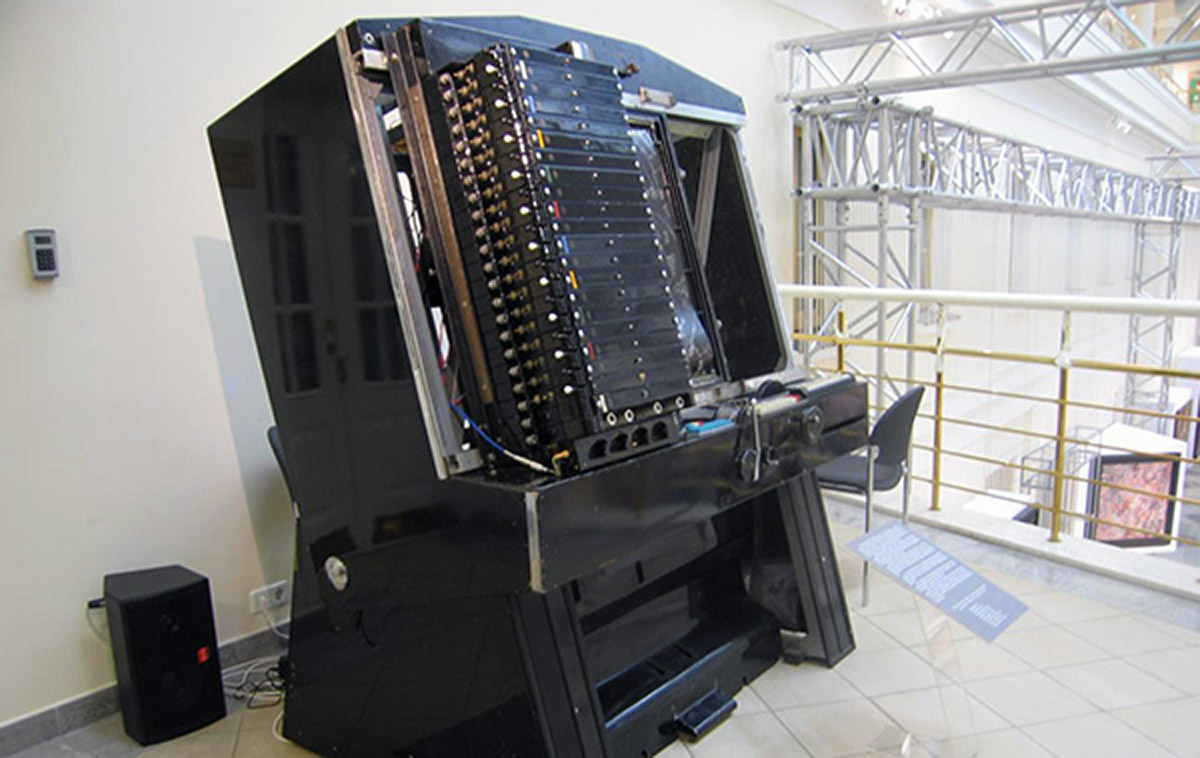
ANS (1937-1957)
Evgeny Murzin’s ANS synthesizer was mentioned in this article several times already, and for good reasons. Undergoing constant development between 1937 and 1957, ANS was the pinnacle of Soviet synesthesia-infused photo-electric sound synthesis technology. Furthermore, the synthesizer was popularized through the work of the composer Eduard Artemiev, who used the instrument in the soundtrack of several iconic films of the director Andrey Tarkovsky, most notably Solaris (1972). ANS was also used at one point or another by other notable Soviet composers, including Stanislav Kreichi, Alfred Schnittke, Edison Denisov, and Sofia Gubaidulina. Furthermore, British experimental outfit Coil also recorded an album on the instrument in 2004 called ANS.
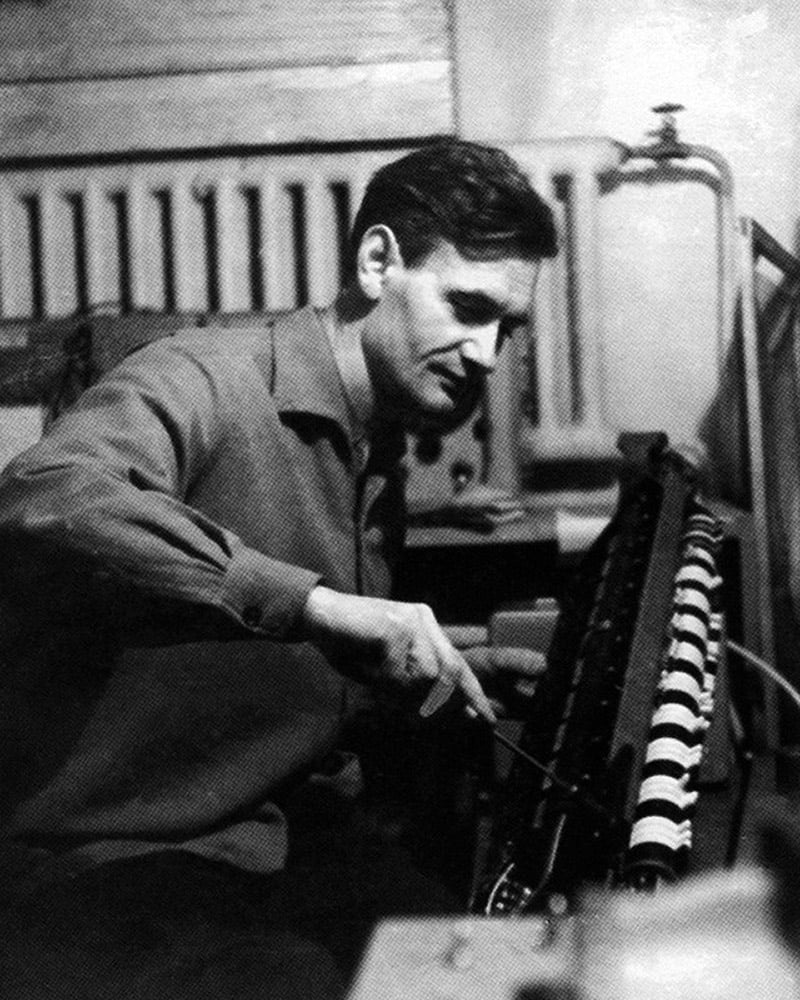
ANS allowed for composing, recording, and playing back of the recorded music. The compositions had to be drawn with a chisel on five glass plates covered with non-drying, opaque black paint. The score could then be immediately played back, and if necessary easily adjusted and corrected. For playback, the glass plates were then scanned by a bank of 20 photocells, which would send the signal into 20 bandpass filters and an equal amount of amplifiers.
Each plate could host up to 144 tracks of individual sine waves, which when combined amounted to a total of 720 voices spanning across 10 octaves. Polyphony was possible, and all 720 voices could be played at the same time, which was easily accomplished with a vertical scratch mark on a glass plate. Each octave was divided into 72 intervals, albeit even smaller octave divisions were possible using the precise cross-cutting technique.
There is only one ANS synthesizer in the world, currently preserved at the Glinka State Central Museum of Musical Culture in Moscow. However, if you’d like to try ANS, it is currently available in virtual form Warm Place.
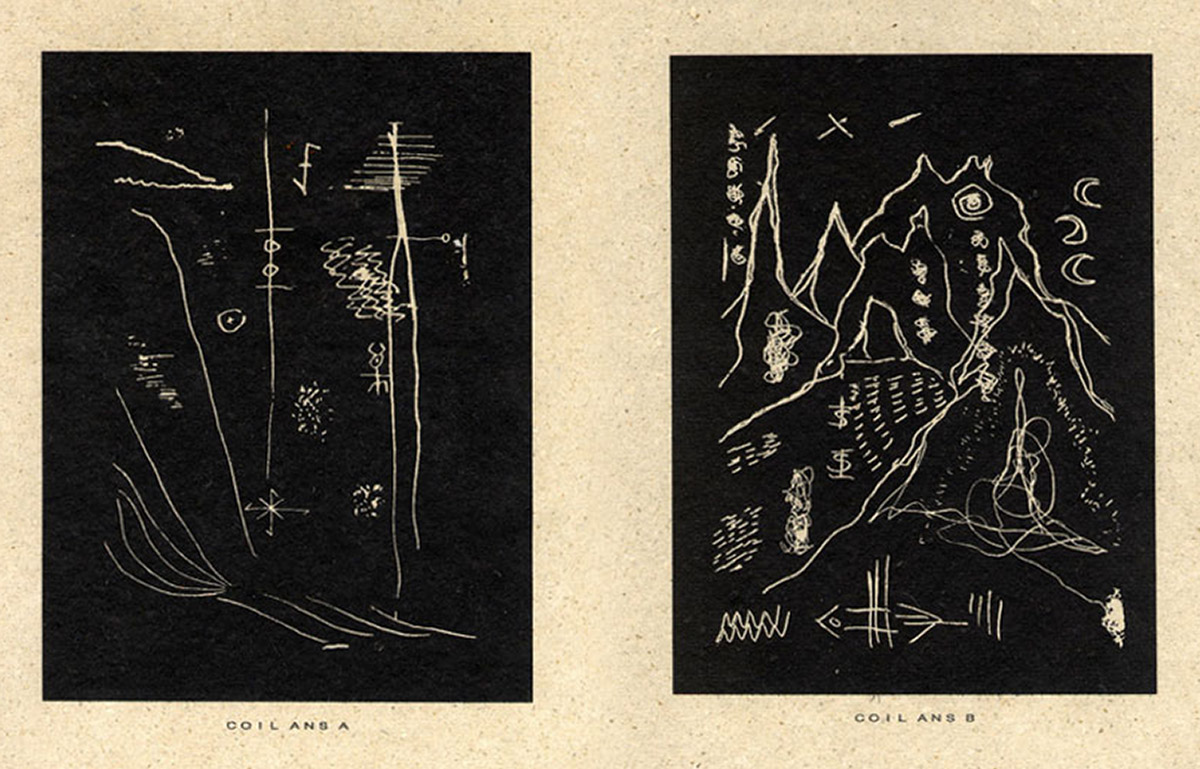
We are living in the golden age of synthesizers, so one might wonder what is the relevance of all of these old machines to us beyond pure curiosity. History shows us that ideas are much more resilient to aging than physical objects. Electronic instruments of today are built on the shoulders of giants, as their inventors take inspiration from concepts that date way back in history. For example, one of the most elusive music softwares Metasynth is directly influenced by all of the optical-synthesis technology discussed in this article. The Theremin is still commercially available via Moog Music, including a revised wavetable version of the instrument. Theremin’s gestural control method alone transcended the instrument itself and can be easily spotted in a number of applications— from Roland’s D-Beam technology to Doepfer’s A-178. Recently released sensor packs for Koma Elektronik’s Field Kit offer yet more ways for using gestural control in the context of music performance and sound design. Contemplating the past, we can't help but mull over what the future of electronic music instruments will look like.

